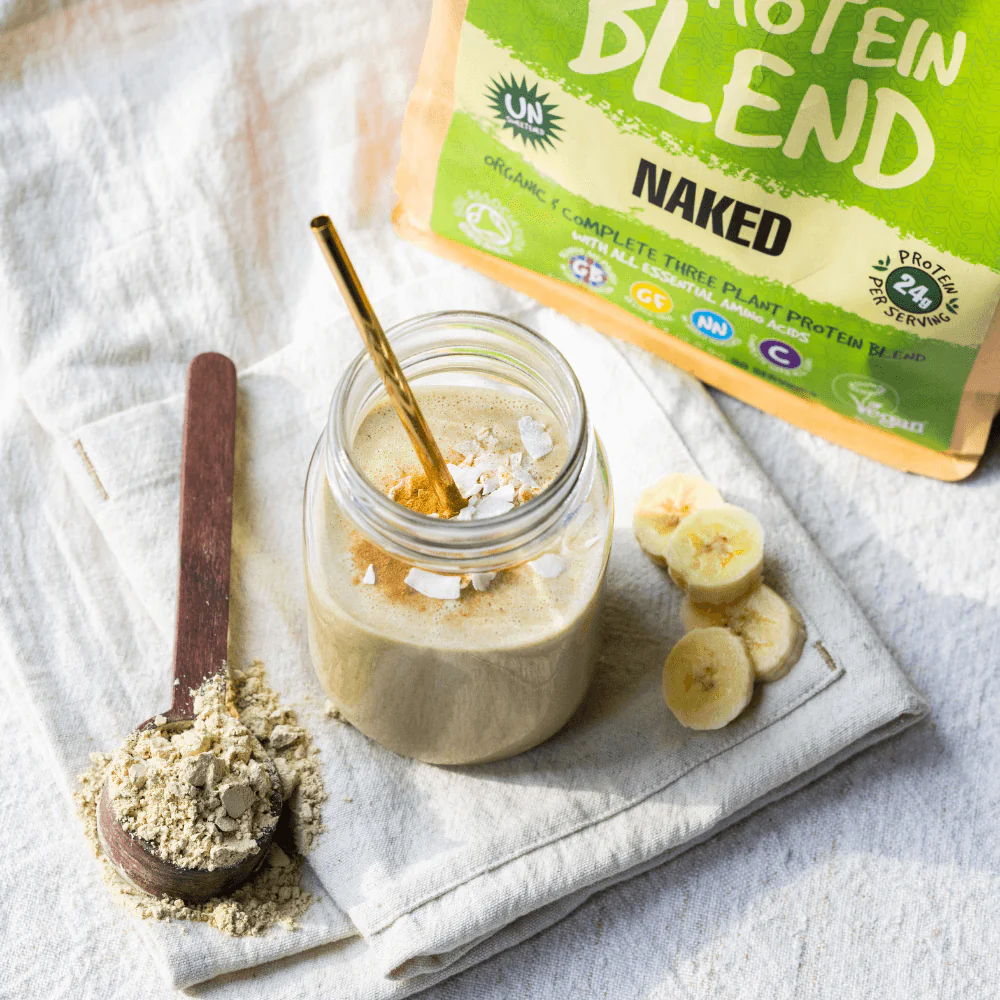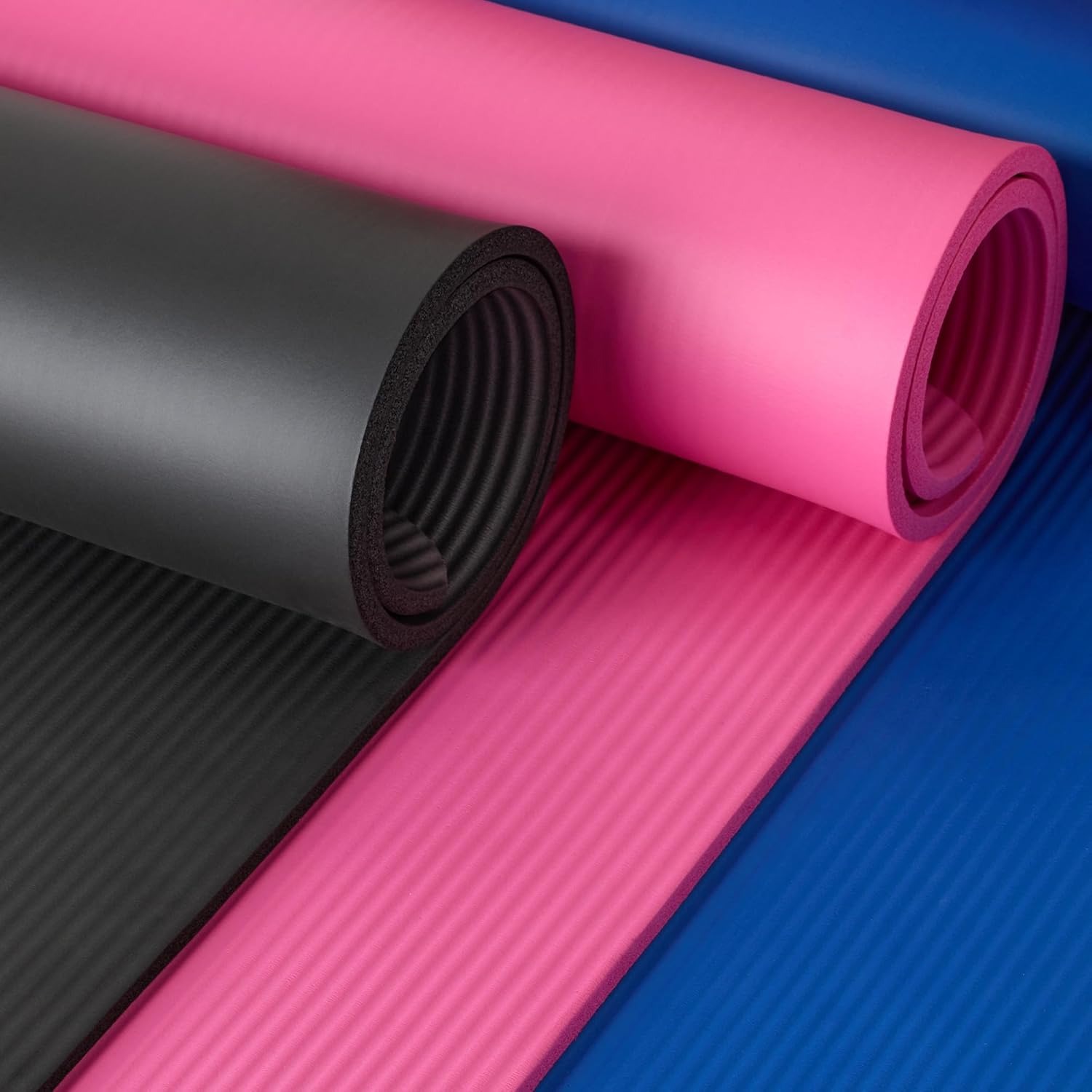Step 1: Sourcing Quality Ingredients
Before you dive into making your own protein powder, you must focus on sourcing quality ingredients. The ingredients you choose will define not just the taste but the overall nutritional value of your finished product. Whether you aim for a vegan blend or a whey-based mix, always prioritize purity and sustainability in your ingredient selection.
Types of Protein Sources
Choosing the right protein sources is crucial for your DIY protein powder. If you prefer animal-based proteins, whey and casein are excellent options with high bioavailability. For plant-based selections, look at soy, pea, and rice proteins – all three provide unique health benefits and cater to those with dietary restrictions.
Choosing Organic and Non-GMO Ingredients
To ensure your protein powder stands out, consider using organic and non-GMO ingredients. These come without synthetic pesticides and genetic modifications, supporting a clean, healthy diet. Although these might cost a bit more, they offer significant health benefits that your customers will appreciate.
Finding Reliable Suppliers
Solid relationships with trustworthy suppliers are the backbone of your business. Take your time to research suppliers thoroughly, looking at their quality control, certifications, and pricing. Reliable suppliers mean a steady supply of the best ingredients – this consistency is vital for customer trust and product quality.
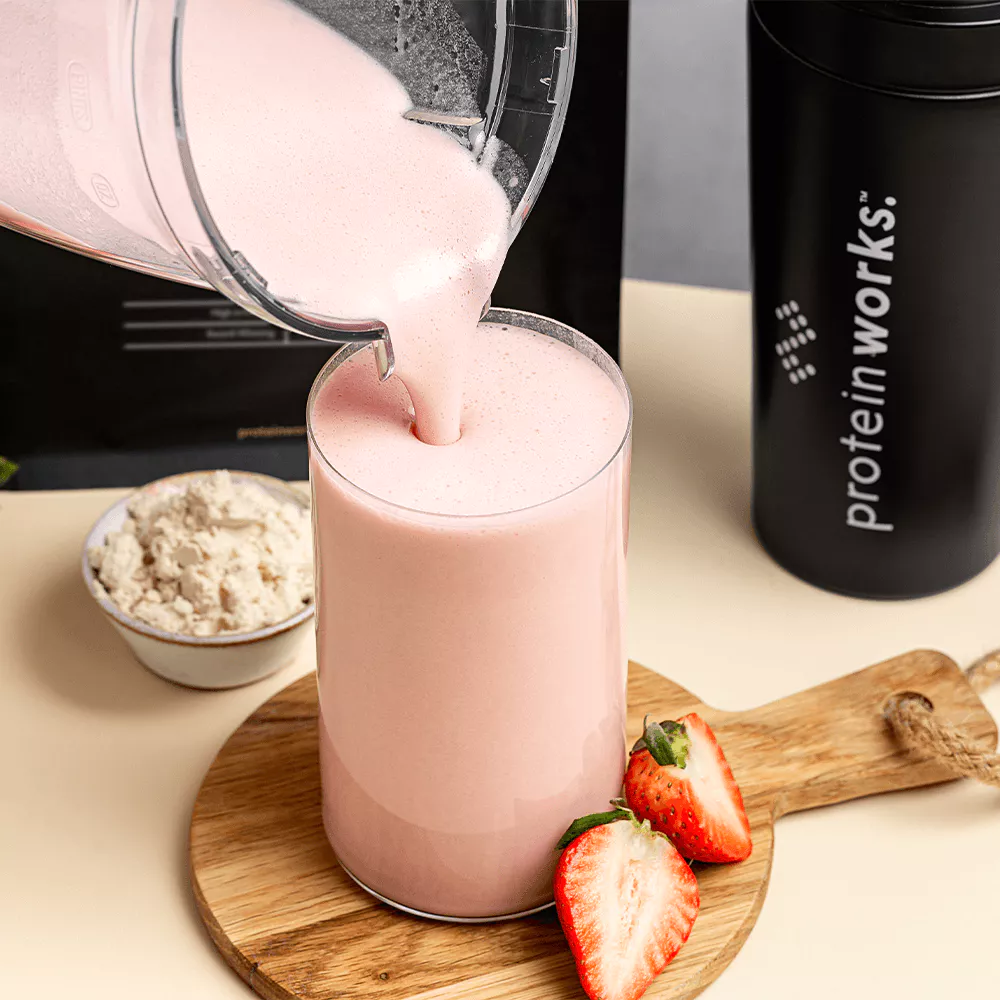
Step 2: Crafting Your Protein Blend
Once you have your high-quality ingredients, the next step is to craft your protein blend. This phase is where you can get creative and customize your protein powder to suit specific dietary needs and taste preferences. Achieving the perfect blend involves determining the right mix of proteins, adding flavors and sweeteners, and enhancing your powder with additional nutrients.
Determining the Right Protein Mix
Start by selecting a diverse array of proteins to ensure a balanced amino acid profile. If you’re using plant-based proteins like soy, pea, or rice, mix them to cover all nine essential amino acids. For dairy proteins, whey is great for fast absorption, while casein is ideal for a gradual release of amino acids. Aim for a high protein per serving and an appealing taste.
Adding Flavors and Sweeteners
The secret to an enjoyable protein powder is finding the perfect balance of flavors and sweetness. Natural flavors like vanilla, chocolate, or strawberry can add a delightful taste. Use natural sweeteners like stevia or monk fruit to avoid added sugars. Your goal is to create a protein powder that tastes great without compromising health benefits.
Incorporating Extra Nutrients and Supplements
To give your protein powder an edge, consider adding other health-boosting ingredients. Chia seeds, flax seeds, and spirulina can provide omega-3 fatty acids, fiber, and vitamins. Including ingredients like maca powder or cocoa powder can add extra health benefits and enhance flavor. Always research or consult a nutritionist to ensure these additions are safe and beneficial.
Step 3: The Manufacturing Process
After perfecting your recipe, the next step is the manufacturing process. Whether you’re making small batches at home or scaling up, a clean and controlled process ensures product uniformity and quality. Here’s how you can align your manufacturing process to professional standards.
Creating a Clean Workspace
Keeping your workspace clean is crucial. Wash and dry all utensils and surfaces before starting. Prevent contamination to ensure the longevity of your protein powder.
Following Consistent Recipes
Consistency is key to maintaining quality. Use precise measurements for every batch. This ensures each serving has the same taste and nutritional value.
Ensuring Batch Quality
Test each batch for flavor, texture, and protein content. Make any necessary adjustments for consistency. Proper testing keeps your protein powder reliable and effective.
By following these steps in your manufacturing process, you can create a high-quality, homemade protein powder that rivals commercially available options.
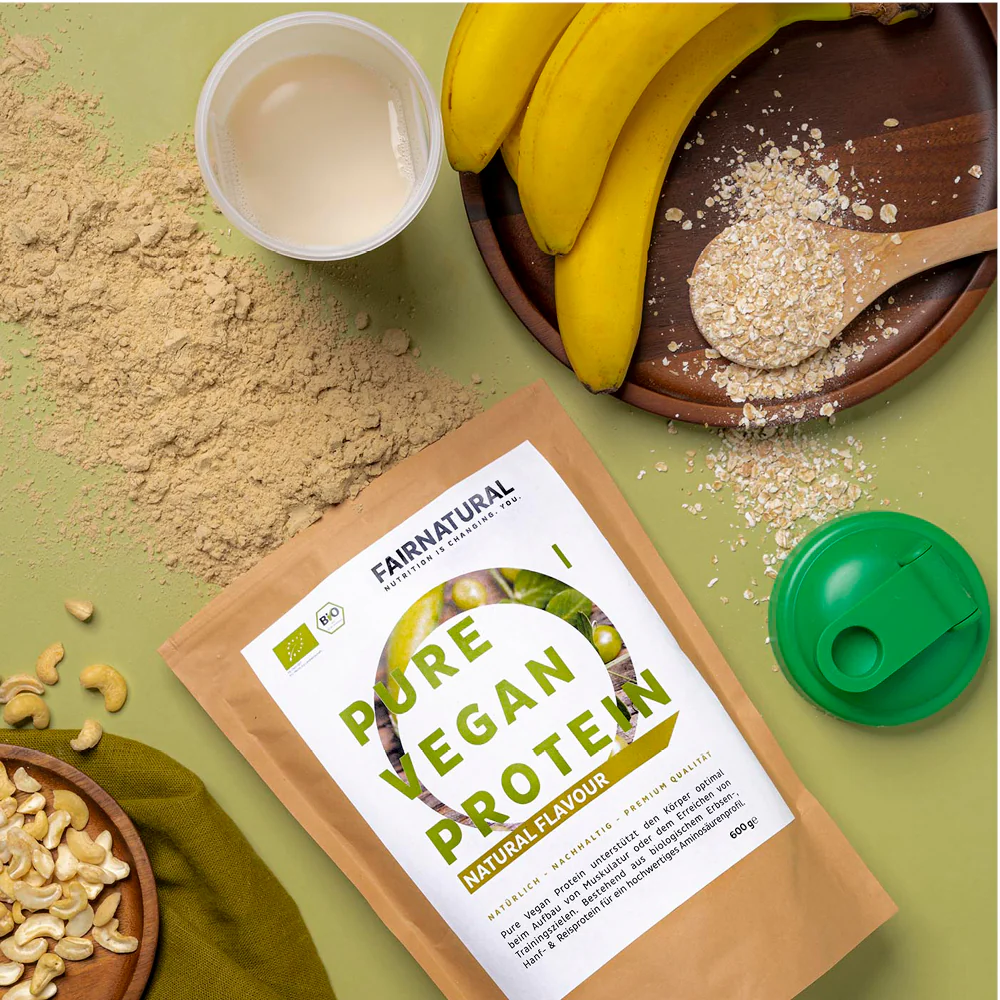
Step 4: Packaging and Labeling Your Product
Once your protein powder is ready, focus on packaging and labeling. The right packaging preserves the quality and makes your product stand out. Simple and readable labels provide important information to your customers.
Choosing the Right Containers
Use airtight containers to keep your powder dry and fresh. Consider materials like glass or recyclable plastics. Ensure the packaging suits the style of your brand and appeals to your target audience.
Designing Informative Labels
Your labels should be clear and easy to read. Include the product name, ingredients, nutritional facts, serving size, and storage instructions. Make sure to follow local regulations for food products.
Meeting Safety Standards
It’s crucial to ensure your protein powder meets safety standards. Check with local health authorities for guidelines. Adding freshness seals can reassure customers about quality. Always make safety a priority for your product.
Step 5: Understanding the Business of Selling Protein Powders
Getting into the protein powder business involves more than crafting a great product. It requires a keen understanding of the market, adherence to health regulations, and strategic marketing. With the right approach, your protein powder could become a sought-after item.
Local Health Regulations and Guidelines
As you prepare to sell your protein powder, you must familiarize yourself with local health regulations. They ensure product safety and consumer protection. This may involve obtaining certifications and following production standards. Check with health authorities to understand these guidelines and avoid legal issues.
Marketing Your Unique Protein Powder
Creating a standout product is just the start. You also need to market it effectively. Figure out what makes your protein powder unique and highlight those benefits in your marketing. Use social media, online ads, and community events to reach potential customers. Remember, your branding and message should reflect the quality and uniqueness of your powder.
Building an Online Presence
An online presence is crucial for sales and visibility. Set up a user-friendly website showing your protein powders and their benefits. Utilize social media platforms to engage with customers and create a community. Online sales channels can also widen your market reach. Consider platforms like Shopify to sell and manage your products.
Entering the world of protein powder sales is exciting, but taking the right steps is essential. Understand and comply with health regulations, use smart marketing strategies, and build a strong online presence to succeed.
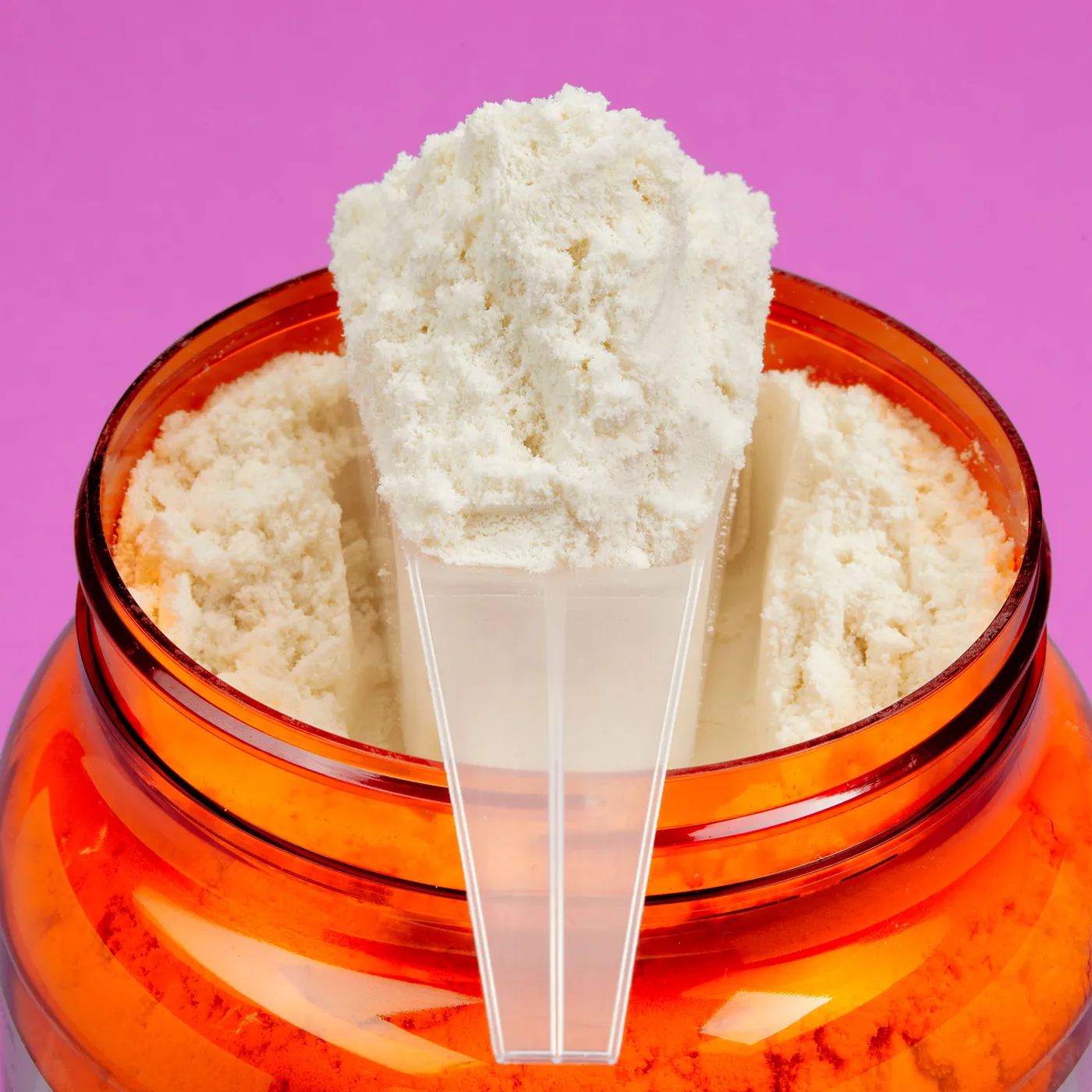
Step 6: Diverse Homemade Protein Powder Recipes
Crafting homemade protein powder allows for diverse recipes that cater to different tastes and dietary preferences. Here, we explore a variety of recipes that provide a range of nutritional benefits and flavors.
Recipe for Seed-Based Protein Powder
For a plant-based protein boost rich in omega-3s, try a seed-based blend. Mix chia, flax, pumpkin, and sunflower seeds. Grind them into a fine powder for a versatile addition to your diet.
Green Power: Pea and Spinach Blend
Combine green peas and spinach for a vegan-friendly protein source. Dry and powder these ingredients to use in smoothies or baked goods, adding a nutritious punch to your meals.
Decadent Chocolate Protein Blend
Chocolate lovers can enjoy a healthy twist. Mix cocoa powder with your chosen protein base. Sweeten with stevia and blend to create a satisfying and health-conscious treat.
Lentil Protein Powerhouse
Leverage the protein-packed goodness of lentils. Dry and grind lentils with a mix of seeds or nuts for a complete amino acid profile. This recipe is hearty and nutritional.
Nutty Delight: Mixed Nuts and Seed Formula
For a nutrient-dense option, try a combination of assorted nuts and seeds. This mix delivers protein, fiber, and healthy fats. It’s perfect for an energy boost throughout the day.
Following these recipes, you’ll be able to create your own protein powder blends that are tailored to your personal health goals and flavor preferences. Be creative and enjoy the process of perfecting your homemade protein powder!
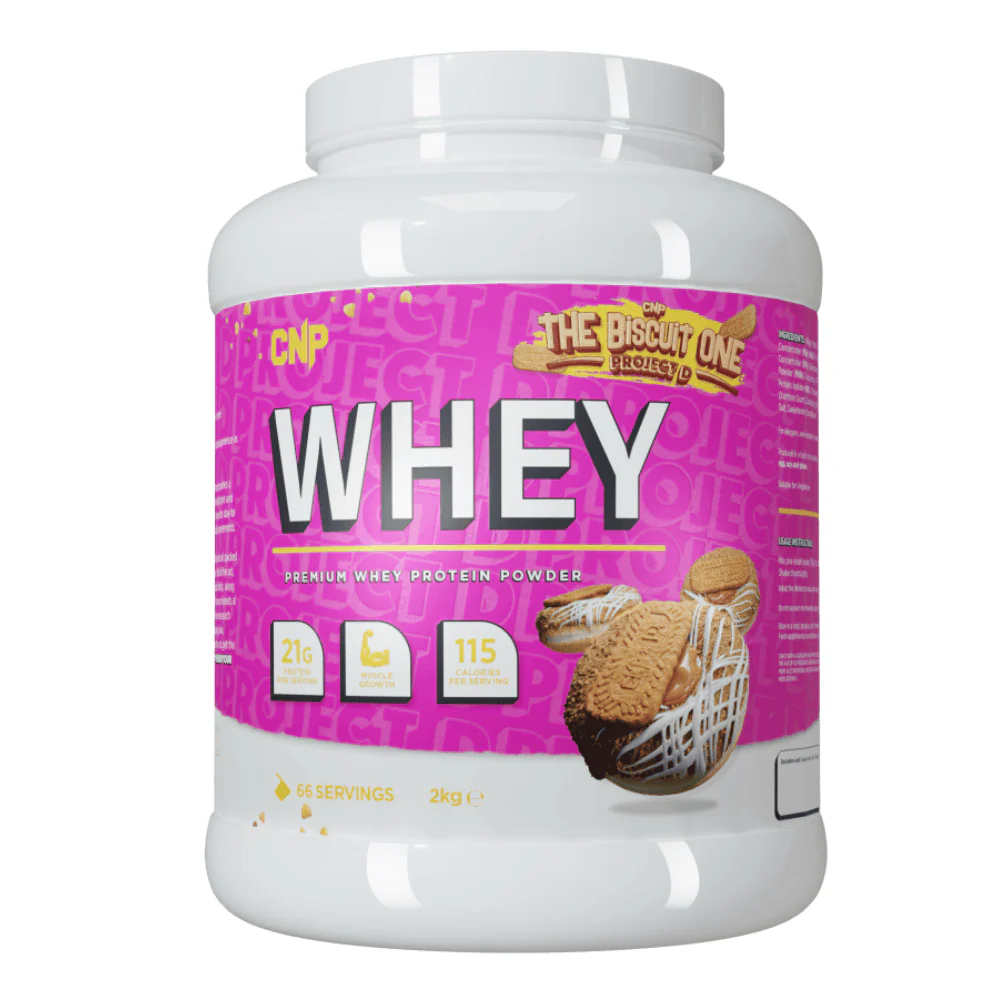
Step 7: Tips for Perfecting Your Protein Powder
Creating the perfect homemade protein powder is an art. Here are some tips to help you master it:
Balancing Nutritional Content
Aim for a mix of different proteins to get a full range of amino acids. Include options like whey, soy, and pea proteins. Check that each serving has enough protein for your dietary goals. Add fibers like chia seeds to aid digestion. Remember healthy fats from nuts or seeds are good too.
Avoiding Common Mistakes
Don’t just use one protein source; variety is key. Watch out for too much sweetener; it can add unwanted sugar. Grind ingredients finely for smooth texture. Store powders properly to keep them fresh. Know the nutrition facts by using online calculators to check protein amounts.
Improving Taste and Texture
The right flavor makes your powder enjoyable to take. Try natural tastes like chocolate or vanilla. Add a bit of stevia or monk fruit as sweeteners. The texture should be fine and blendable. Use a good blender to make the powder smooth. This will make it mix well in liquids or foods.
FAQ: Unwrapping the Essentials of Homemade Protein Powders
Creating homemade protein powders raises many questions. Let’s address some common queries with clear, concise answers.
Demand and Popularity
Why do people love protein powders? They offer a quick, easy way to boost protein intake. This fuels workouts, aids in muscle recovery, and supports overall health. With more people prioritizing fitness, the demand for protein powders grows.
Difference Between Different Protein Sources
What sets whey apart from plant proteins? Whey protein, from milk, gets absorbed fast by the body. Plant proteins, like pea or soy, are great for those avoiding dairy. They pack all essential amino acids too.
Ensuring Quality and Compliance
How can I ensure my powder’s quality? Select the best ingredients and follow clean production practices. Consult with a nutritionist, and always check your blend meets safety regulations. Staying informed on local health guidelines is key for selling protein powder.
